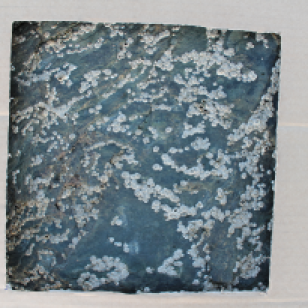
Fangorn Forest as represented in Lord of the Rings: The Fellowship of the Ring. This is fantasy fiction, not the type of habitat that we should expect to find or create in the real world.
One of the reasons often put forward for growing more trees is that it’s a method to draw down carbon from the atmosphere and lock it up in wood. Afforestation is far more efficient and straightforward than any currently imagined ‘carbon capture technology’. Photosynthesis is the original carbon uptake mechanism, evolved and perfected over more than a billion years, and human ingenuity isn’t going to design anything better, at least not on the scales required by rapid climate change. Trees have done it all before.
Before going much further, and for the avoidance of doubt, planting trees (even a trillion of them) isn’t going to solve the climate crisis. It’s one potential tool but no substitute for massive reductions in emissions. At its very best, tree-planting would only remove the carbon which has been released from land-use change, not that from the burning of fossil fuels, which represent stores of carbon generated hundreds of millions of years ago. That’s even before we get to the contentious question of where we might plant the trees, which usually turns out to be someone else’s country.
The other problem with tree-planting is that it assumes the trees either stay in place or are continuously replenished. Forest fires, logging, land clearance, droughts, pest outbreaks… all the potential causes of tree mortality will eventually lead to this carbon returning to the atmosphere. A tree is at best a temporary carbon store, albeit one that can last a few centuries. We’re not laying down any new coal deposits, they just don’t make it any more. I’m therefore sceptical of any off-setting program which justifies current emissions on the basis of anticipated long-term carbon storage through tree planting. It’s not something we can rely on.
All these caveats accepted, we can begin to ask the question: if we really were planting forests with the primary objective of taking up carbon, and we planned to do it in the temperate countries which are overwhelmingly responsible for global change, what should we plant?
A recent newspaper article asked this question with the UK in mind*. By coincidence I had a Twitter exchange on the same subject shortly before the article came out. As a thought experiment it’s a reasonable discussion to have, and by doing so publicly it forces people to contemplate the implications of the arguments that are so often made for planting trees.
The right tree species should be (a) fast-growing under local conditions, (b) tall, preferably forming dense forests with as little space between the trees as possible, and (c) of high wood density, maximising the amount of carbon for a given volume of trunk. Ideally they should also be long-lived and relatively resistant to the many forms of disturbance that kill trees, including extreme weather and diseases. There’s no single species of tree that satisfies all these conditions, not least because high wood density leads to slower growth rates. Some compromise is necessary.
The conclusion of the article, taking into account the assumption that carbon uptake was the sine qua non, was that plantations of fast-growing non-native conifers were the best way forward.** The backlash to this suggestion was immediate, predictable and justified. Such tree species are not only hopeless for conservation (and therefore would lead to a net loss of biodiversity) but also aesthetically undesirable as they would transform familiar landscapes. Yes, say the public, we want more forests, but surely not like this.
I don’t disagree with any of the objections to such a scheme, but it does highlight the inherent problem with making so many claims for the benefits of tree planting that are logically incompatible. It is impossible to design a forest which maximises all the potential functions we want from them: promoting native species, boosting biodiversity, storing carbon, amenity value, aligning with our aesthetic preferences, and maybe also providing some economic benefit to the landowners who are being asked to turn over their productive estates to trees. If we pick just one of these factors to emphasise — in this case carbon — then inevitably we will have to lose out on the others.
Every response to climate change presents us with difficult choices. The trite maxim that we should plant more trees puts people in mind of a sylvan idyll of sun-dappled glades beneath the bowers of mighty broad-leaved giants. Such forests exist in Europe only in the imagination. If real trees are to be used to solve our problems then real forests will be necessary, and they might not be the ones that everyone expected. Be careful what you wish for.
* Full disclosure: the academic whose views the article reports, Prof. John Healey of Bangor University, is also a collaborator of mine (we co-supervise a PhD student). We haven’t shared our opinions on this topic though.
** My pick, if we’re playing tree Top Trumps, is the Nordmann fir, Abies nordmanniana, which is so much more than just a great Christmas tree. It’s also the tallest-growing native tree in Europe and as a montane species tolerates a wide range of challenging environments.




















